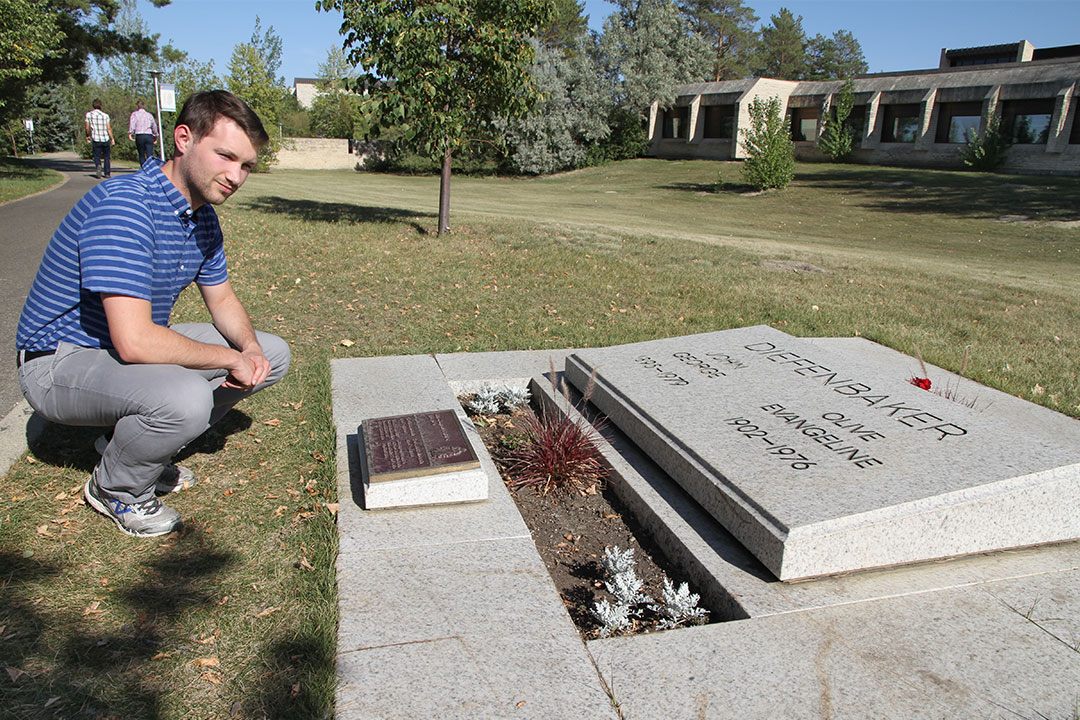
Forever at rest at the U of S
It may be the lead-up to Halloween bubbling over with thoughts of ghouls and spirits, but in the past few weeks, employees at the Diefenbaker Canada Centre have had several encounters spurring on an urban legend concerning former Canadian Prime Minister John Diefenbaker.
By HenryTye GlazebrookUnexplained phenomenon—alarms going off for no discernable reason or unexplained creaks and groans in seemingly empty rooms—aren’t uncommon at the centre, with claims of ghost sightings stretching back more than three decades, but some ghastly happenings are eerie enough to send a tingle up even the bravest of spines.
“Two of our docents were looking at the security cameras to check if there were any visitors in the gallery,” said David Sparling, student docent and researcher at the Diefenbaker Canada Centre.
“In our replica Prime Minister’s Office, one of my co-workers noticed a blurry, indistinct figure in the corner. She initially believed that this was just our iPad stand, but the other docent commented that it looked more like a person. Then, as they watched, the blurry figure vanished—as if a person had just left.”
The answer to why the ghost of the revered former prime minister might be wandering the University of Saskatchewan may be found just around the corner from the main entrance to the centre, where he was laid to rest beside his second wife, Olive. The pair were buried there on Aug. 22, 1979.
Diefenbaker played an intimate role in planning his own funeral, arranging for a train-driven procession from Ottawa to Saskatoon, and garnering special approval from the provincial government and the U of S Board of Governors to establish the on-campus gravesite.
The U of S, being Diefenbaker’s alma mater, a Saskatchewan institution of great distinction and the place where he proudly served as the seventh university chancellor, was seen by the man as the perfect place in which to end his rail-bound tour and rest for eternity.
“Diefenbaker was part of the first generation of students at the U of S, so he felt a deep connection because of that,” Sparling said, adding that the former prime minister donated his estate to the university, contributing to the construction of the Diefenbaker Canada Centre in the process.
“Some of the steps that put him on the path to politics were first taken here; both getting his law degree and participating in the university’s mock parliament as a student. He wanted to cement his legacy at the U of S, not just with the Diefenbaker Centre but also by being buried here and becoming something that people could pay their respects to for years and decades.”
But problems arose when the time came to decide what flag would adorn his casket. Diefenbaker, a staunch defender of the Red Ensign which formerly represented Canada, was upset with the idea of cloaking his final resting place with the red and white Maple Leaf banner that flies today—even after the decision was made to split the two half and half.
“Some claim that Diefenbaker did not approve of this pairing, that it caused his spirit to rest uneasily and that he still roams to this very day,” Sparling said.
Diefenbaker is joined by Sir Frederick William Gordon Haultain, second chancellor of the U of S, as one of two people of historical influence buried on campus, with spooky tales cloaking their legacies.
Haultain, whose ashes were laid beneath a small bronze plaque near the Memorial Gates on Oct. 23, 1943, is said to sometimes walk the grounds near his resting place.
“Some people claim to have seen a lone, mysterious figure wandering around the gates late at night,” Sparling said. “No one has managed to talk to this figure, because if they’ve ever approached, it has vanished.”
In his roles as the first Premier of the Northwest Territories and Chief Justice of Saskatchewan, during which times he played a formative role in the founding of both Saskatchewan and Alberta, Haultain fought tooth and nail to keep partisan politics out of the Canadian west.
This staunch belief in bipartisanship—combined with a poor relationship with former Prime Minister Sir Wilfrid Laurier, who laid the cornerstone of the Peter MacKinnon Building—paints a vivid picture of why some believe Haultain’s ghostly presence might roam around U of S grounds to this day.
“It’s clear that his overall project of keeping partisan politics out of Saskatchewan was not successful,” Sparling said. “Possibly that is a reason for his restless spirit to wander until such time as partisan politics are a thing of the past in Saskatchewan.”

